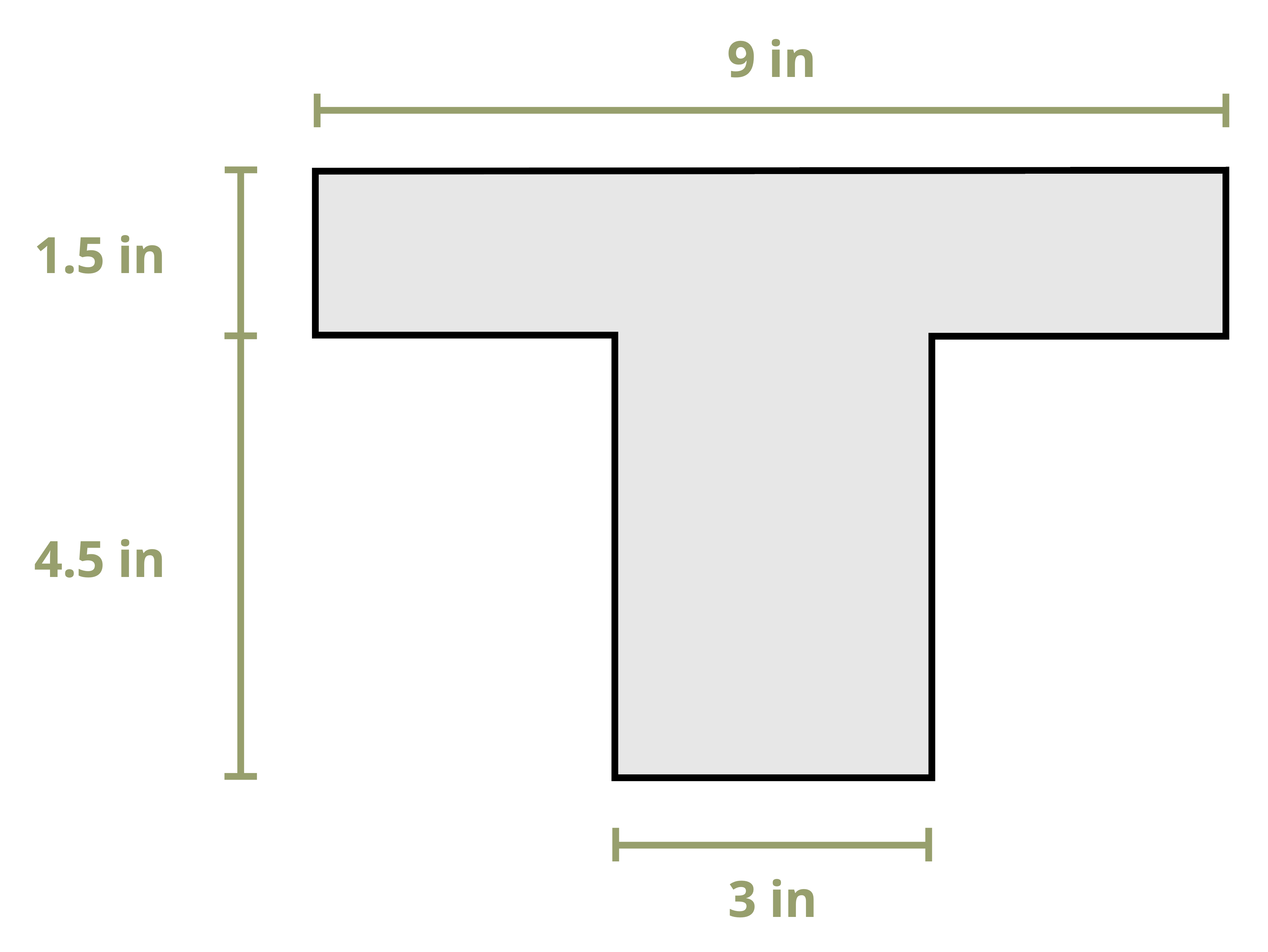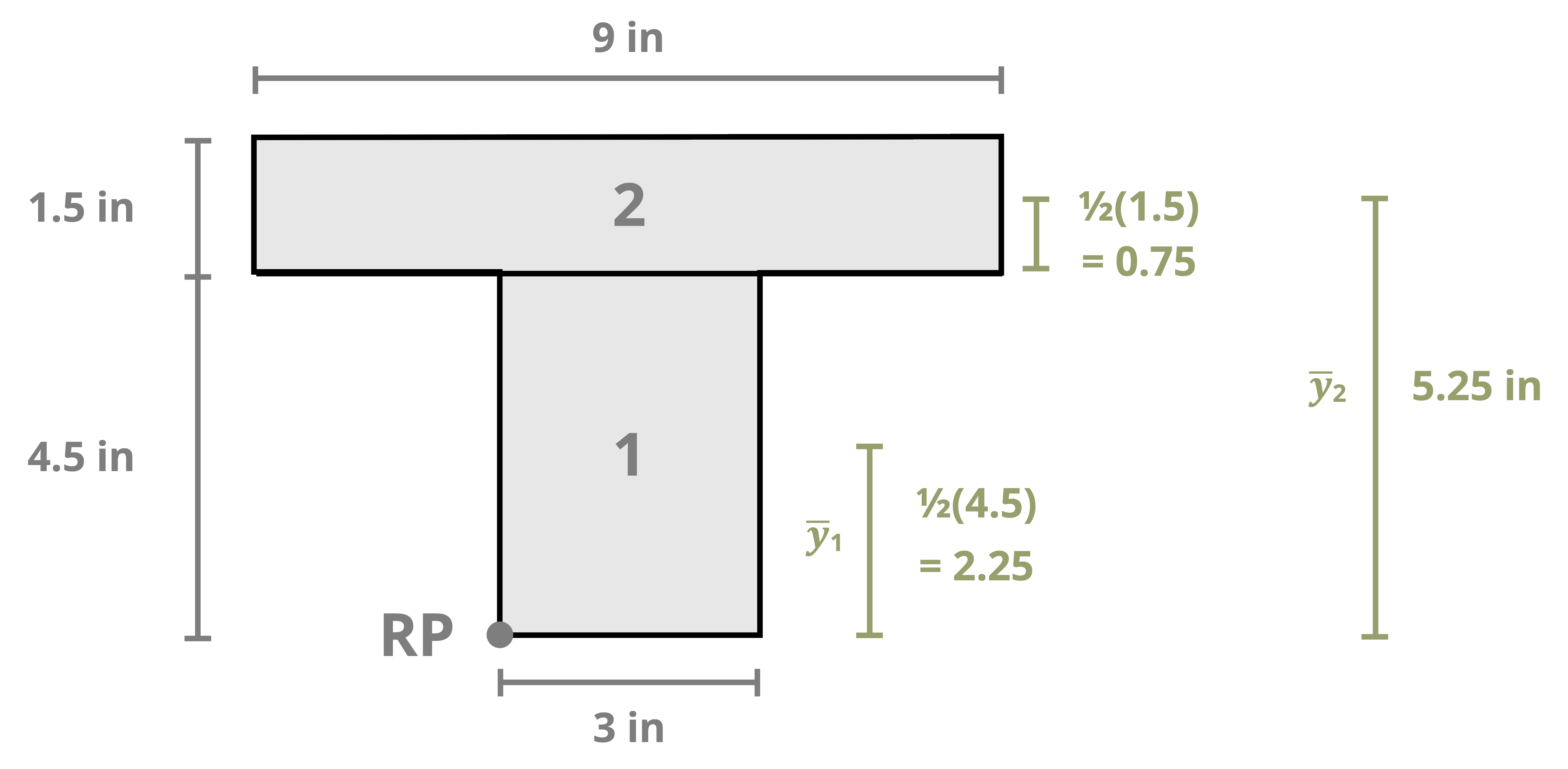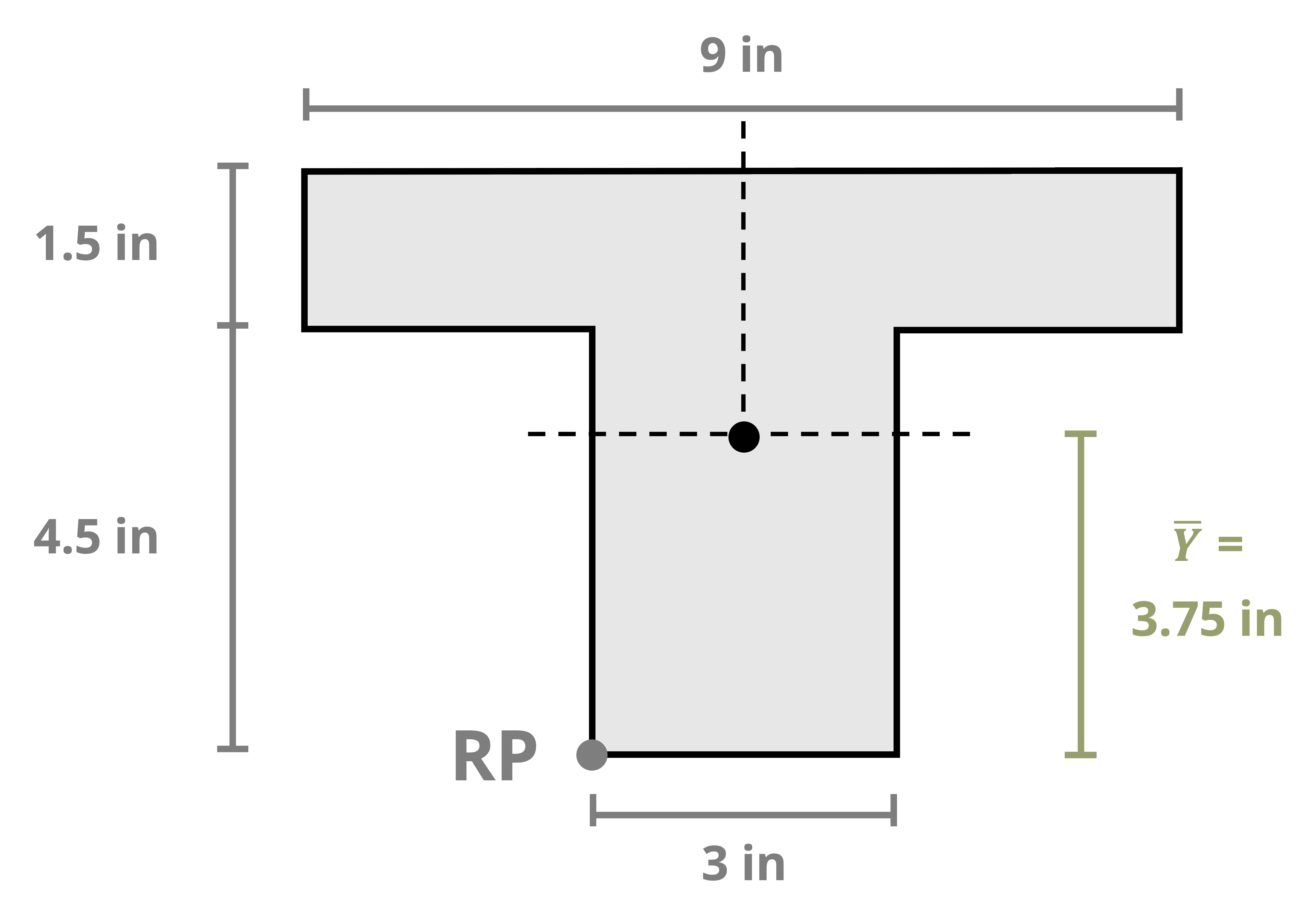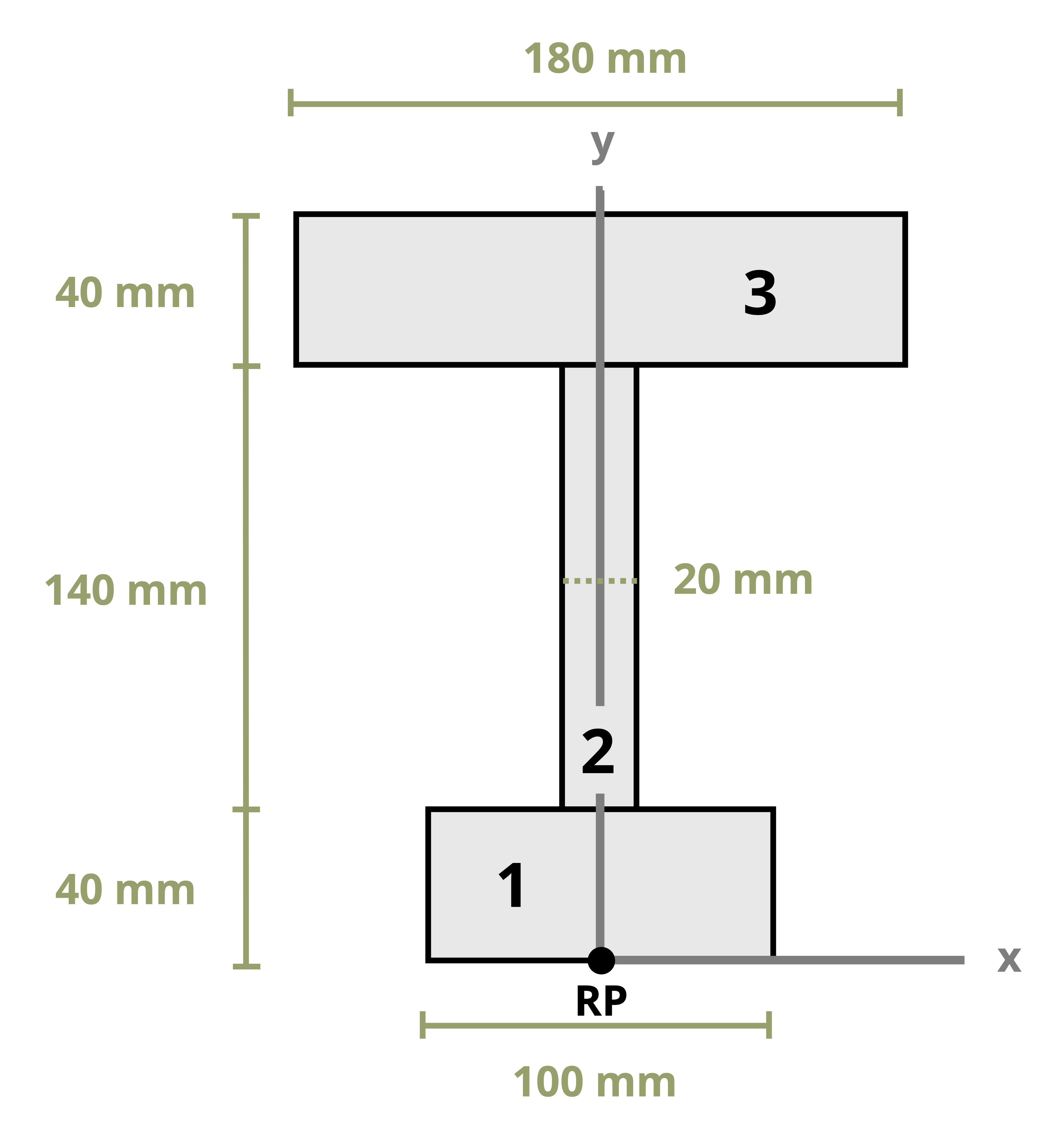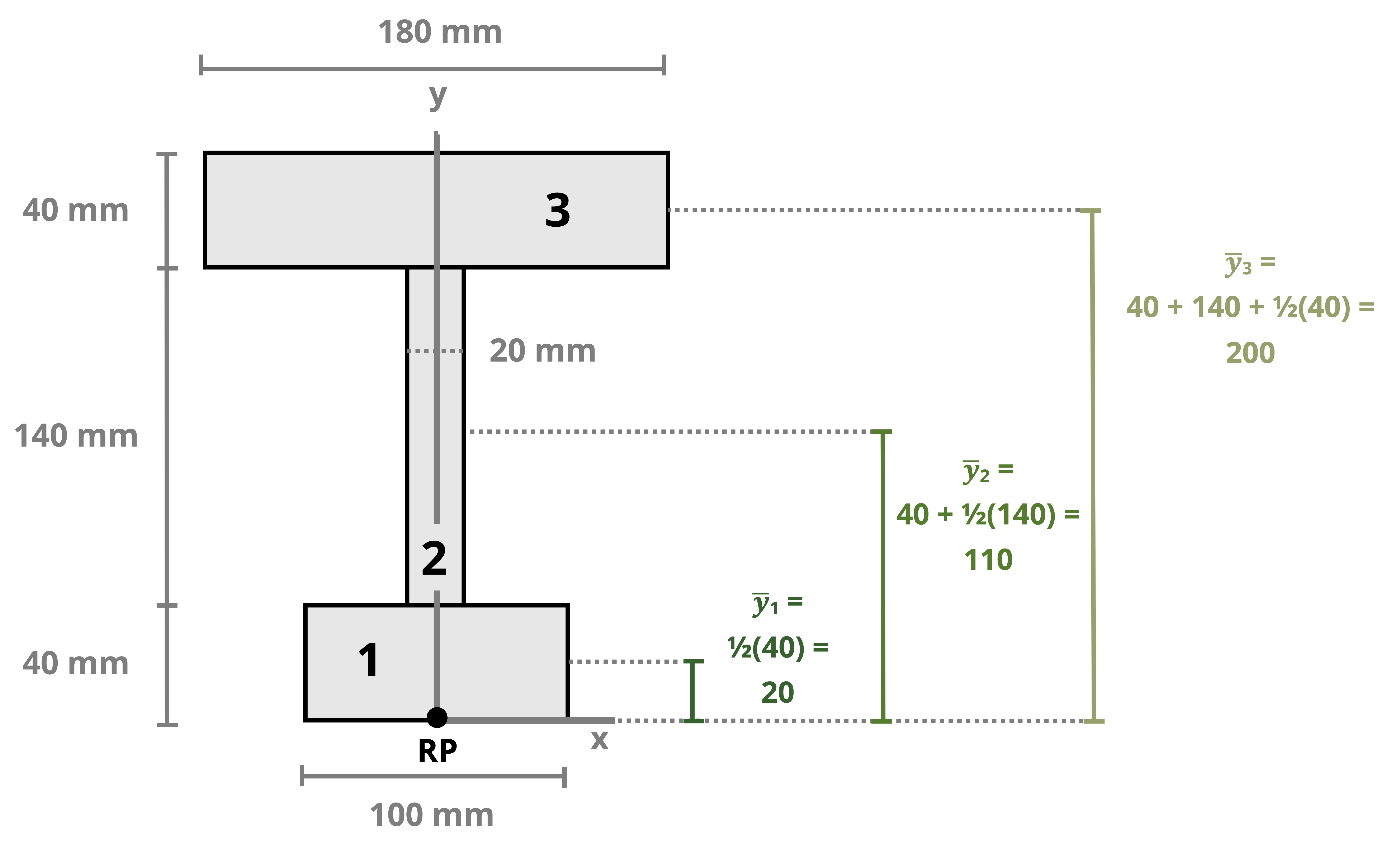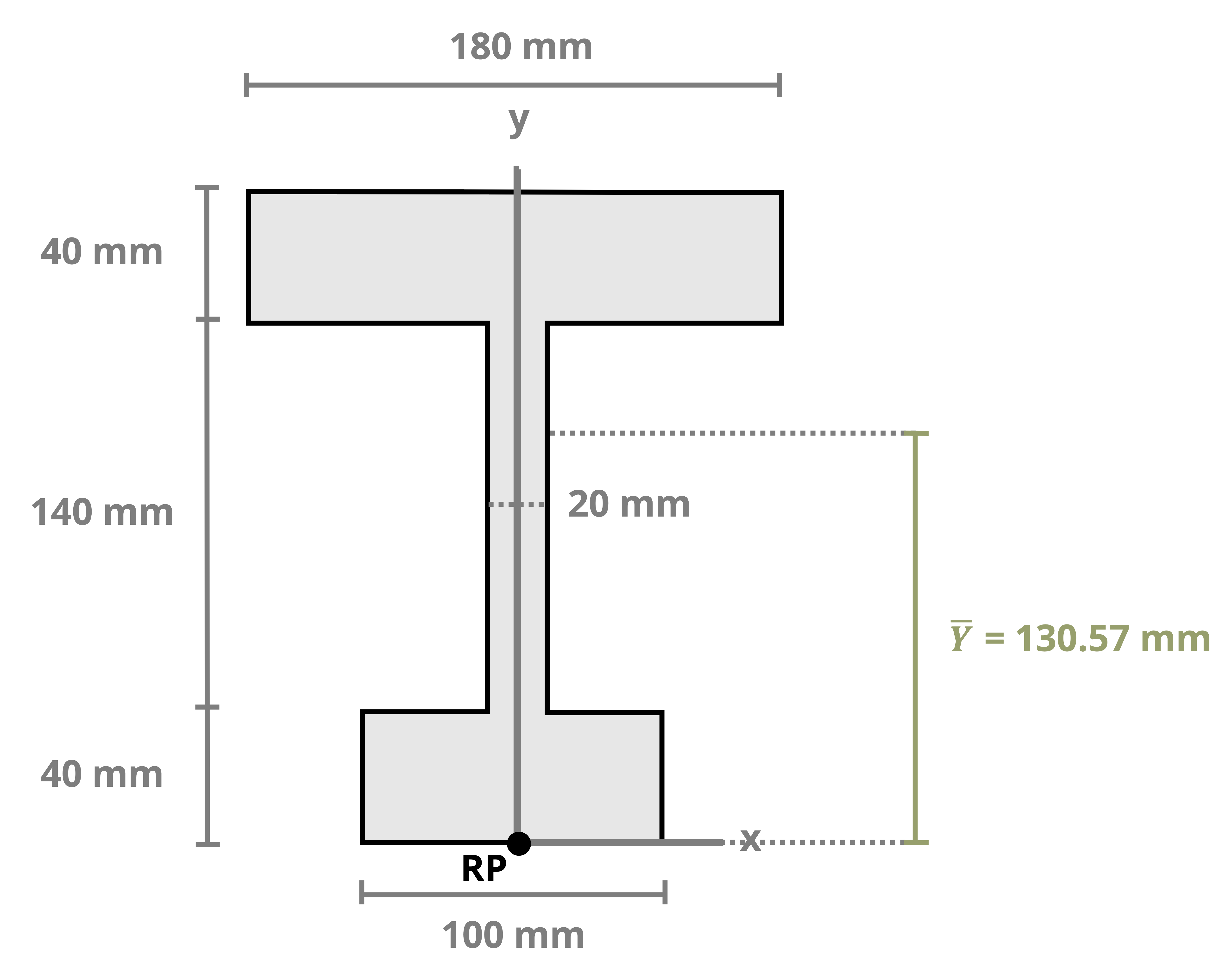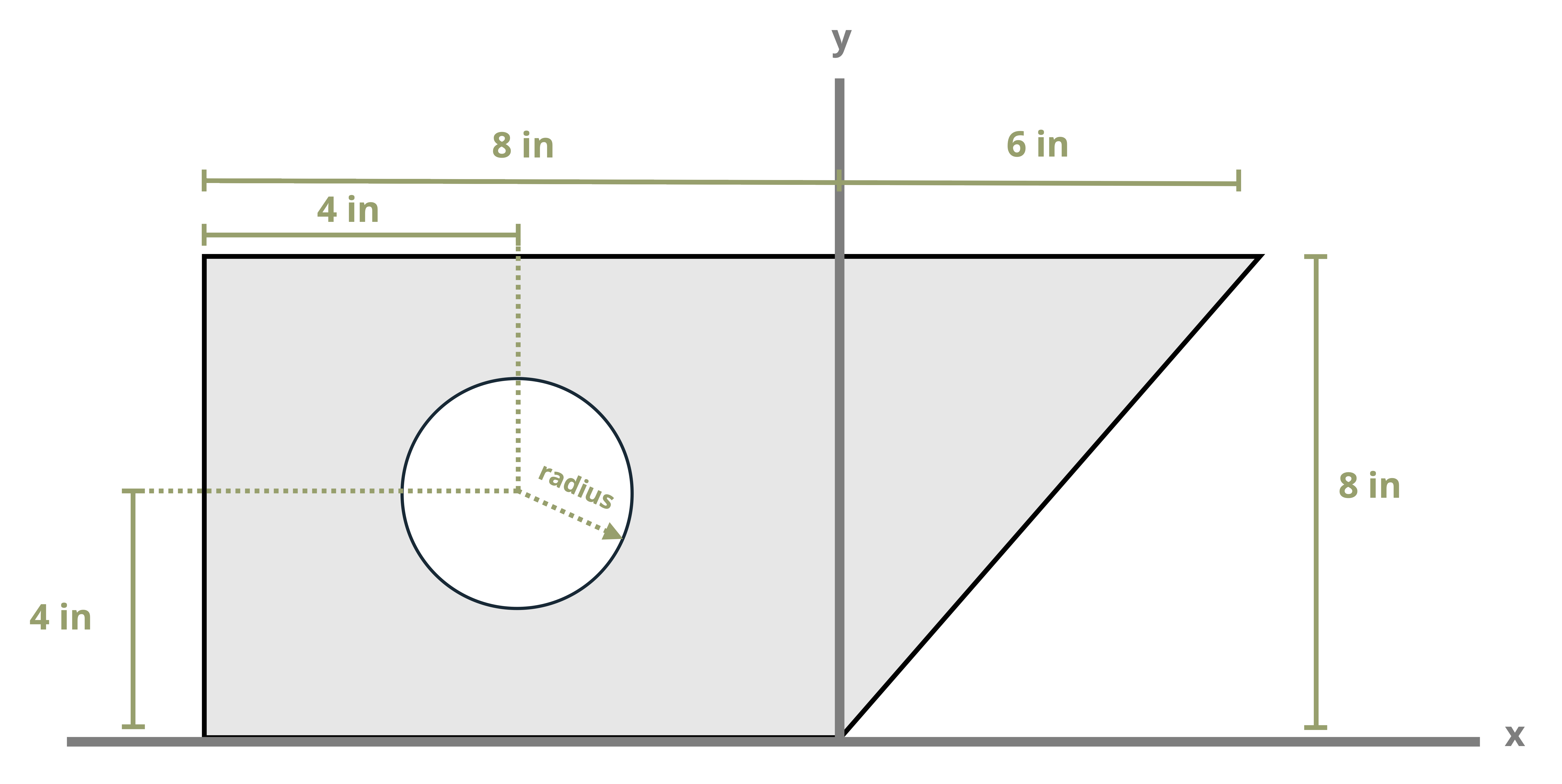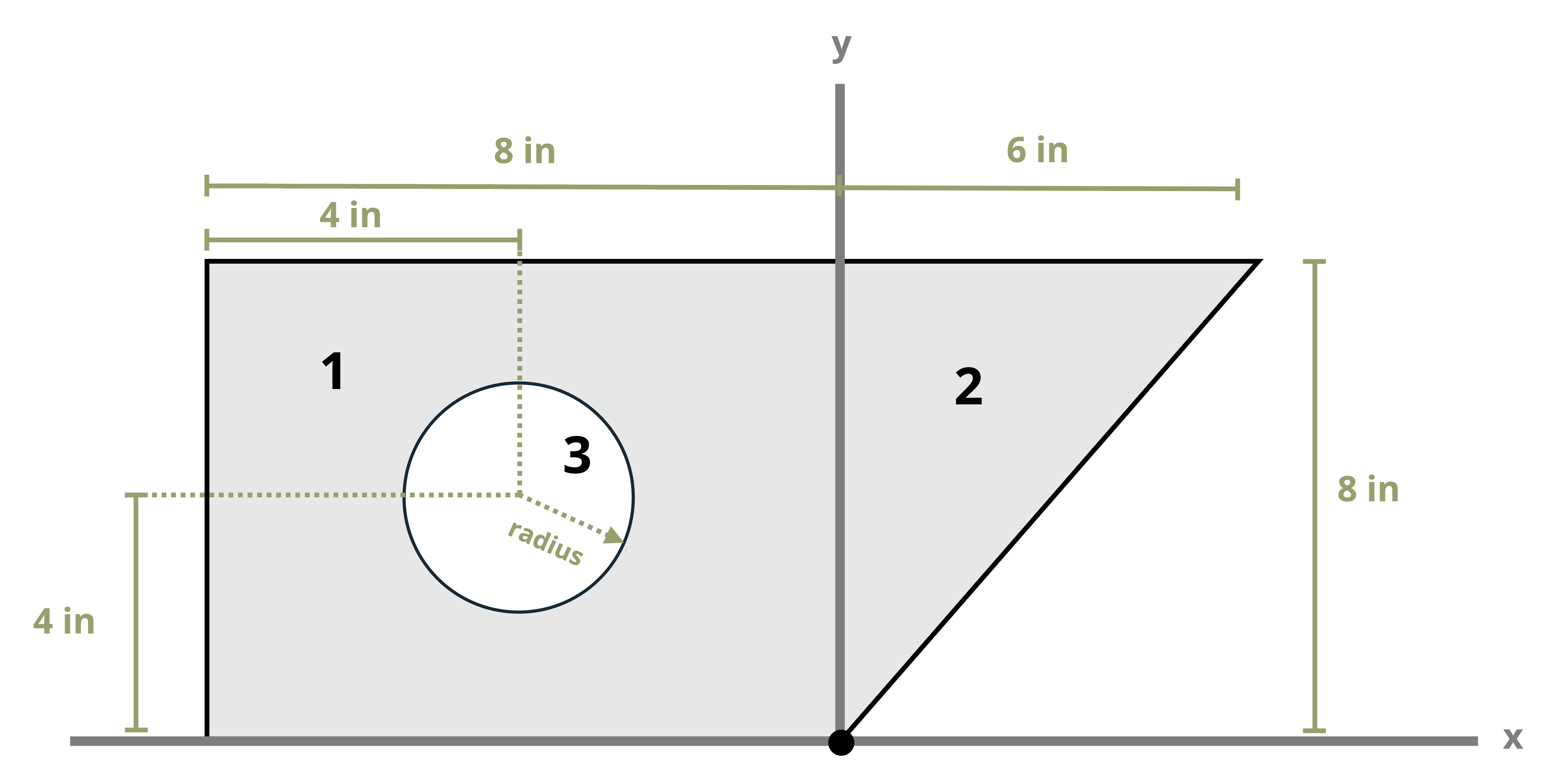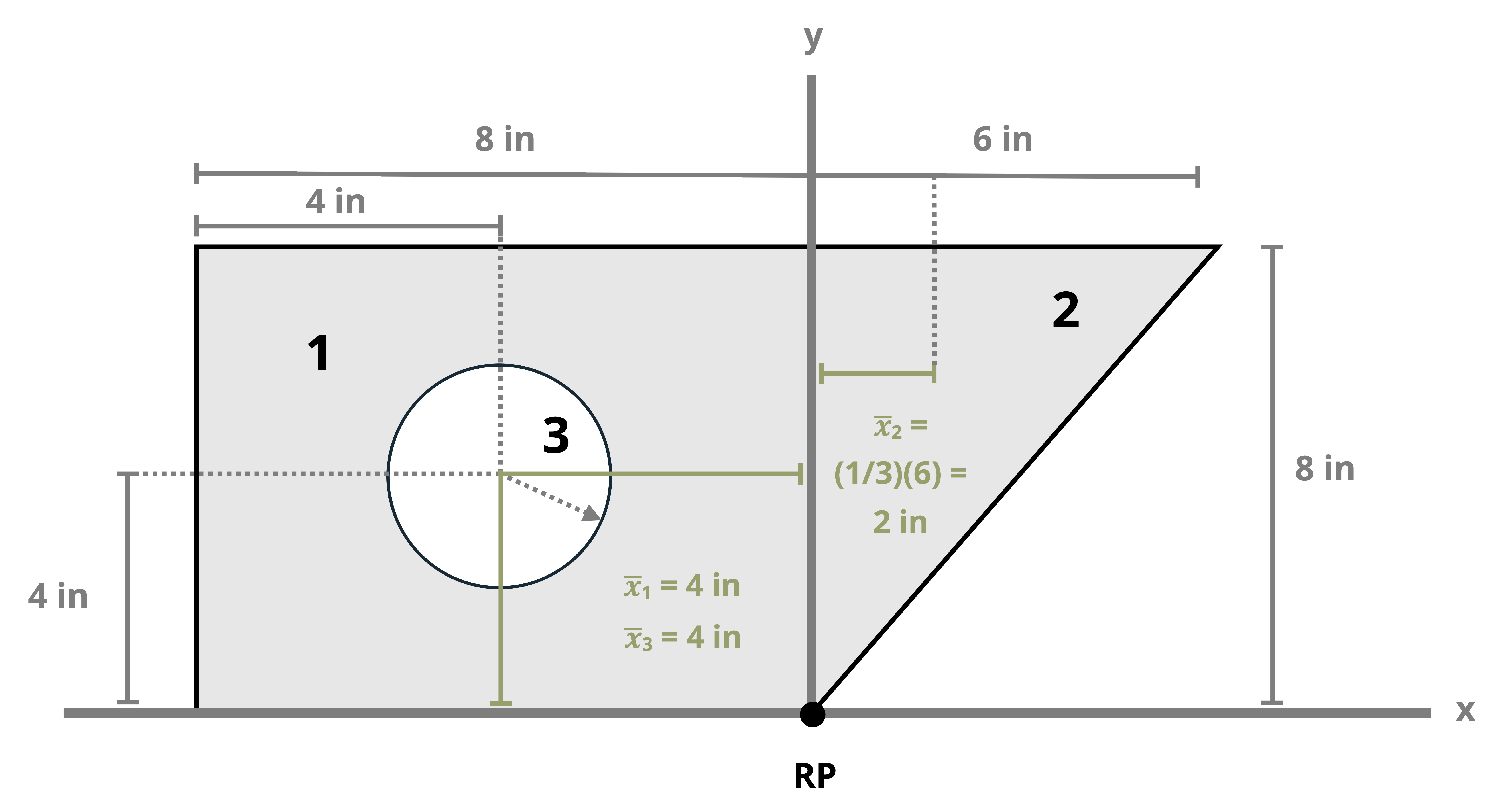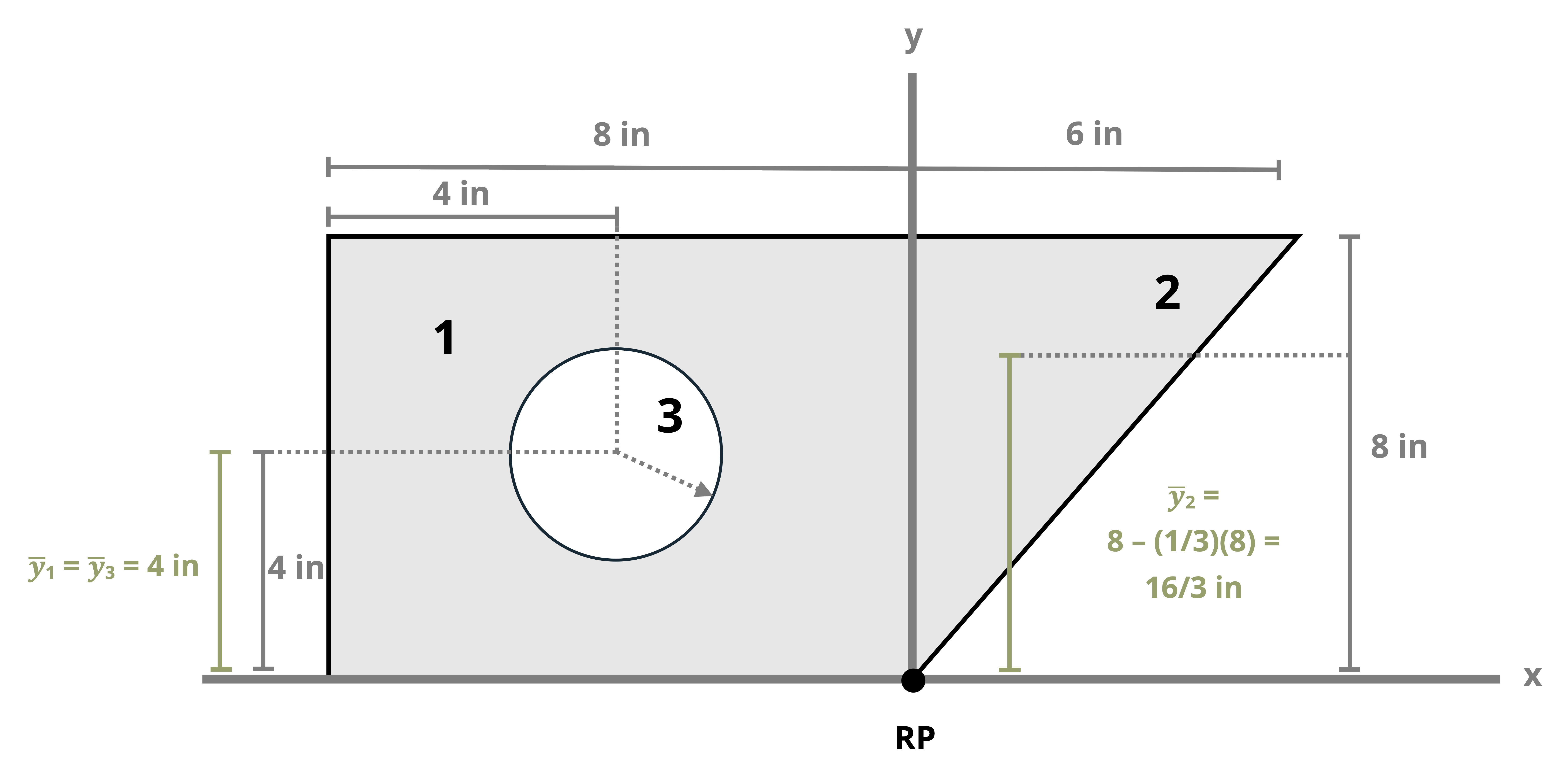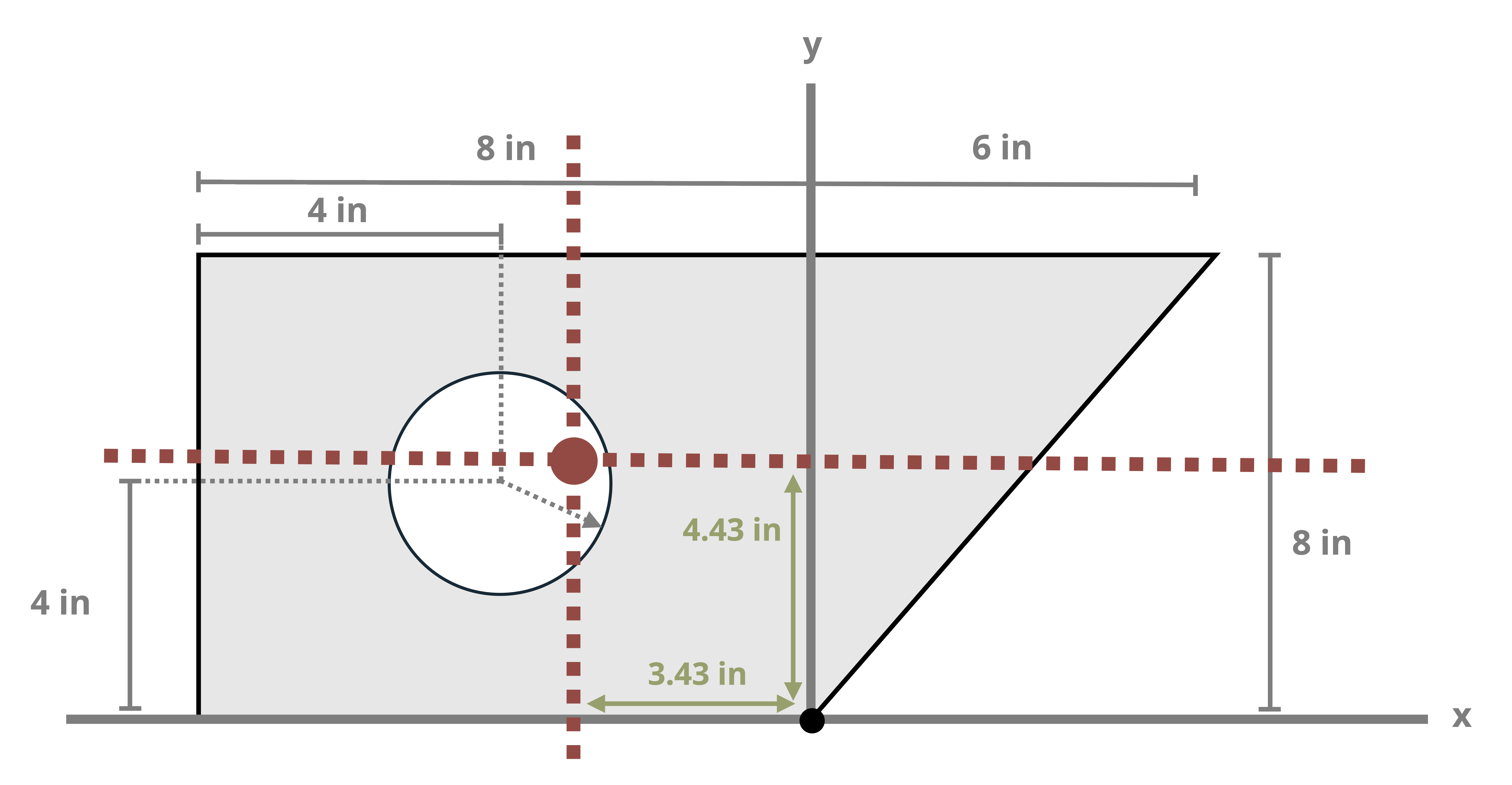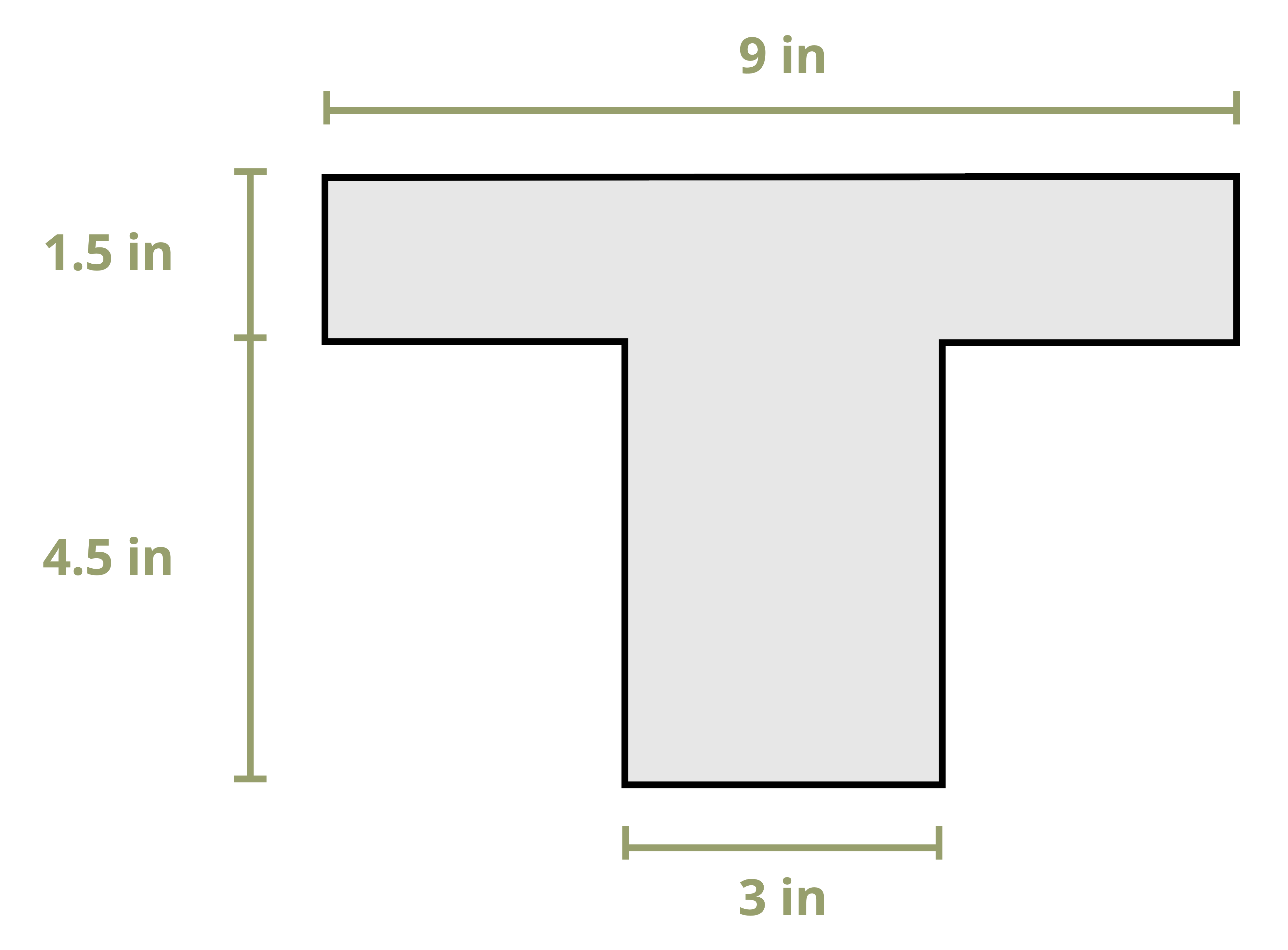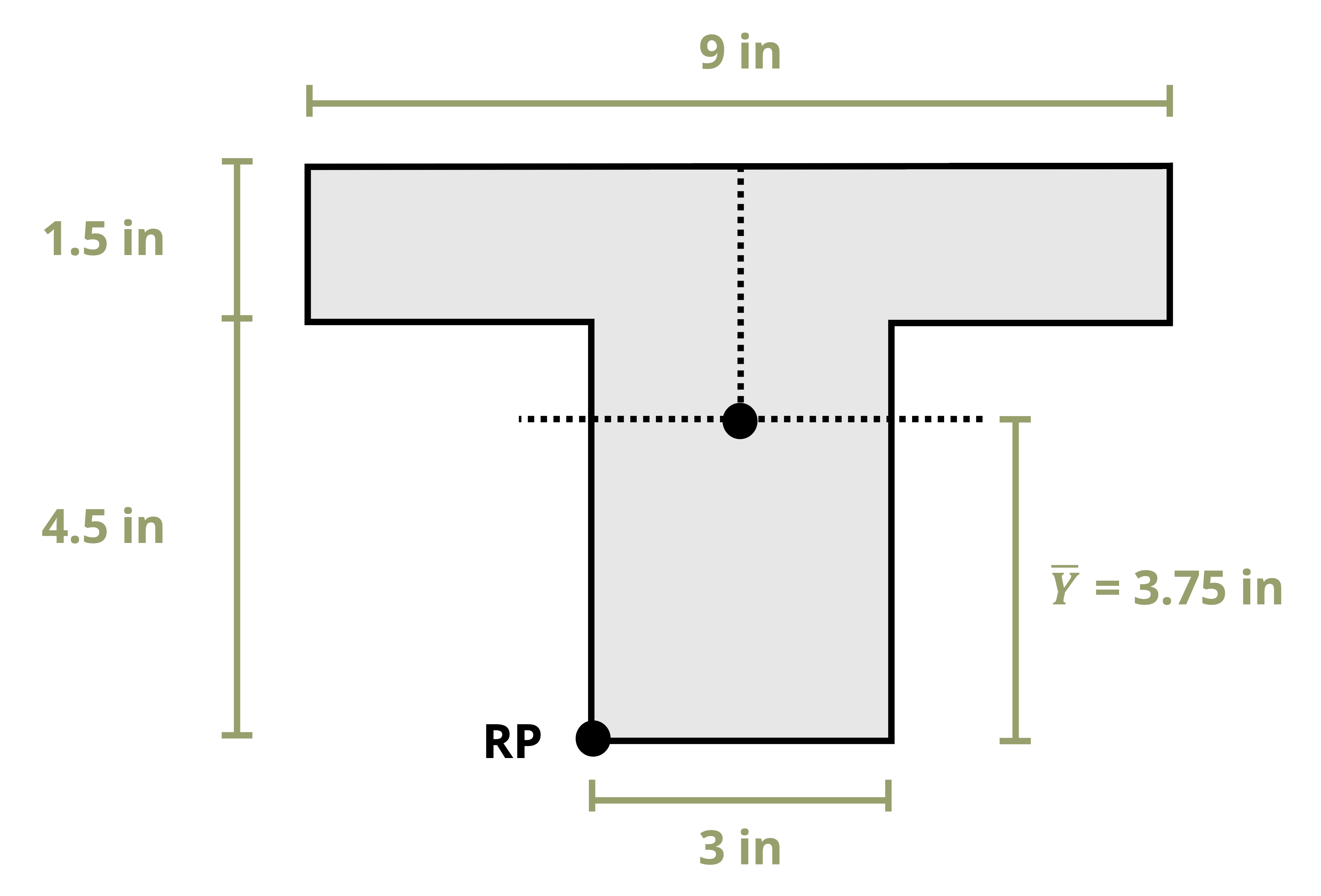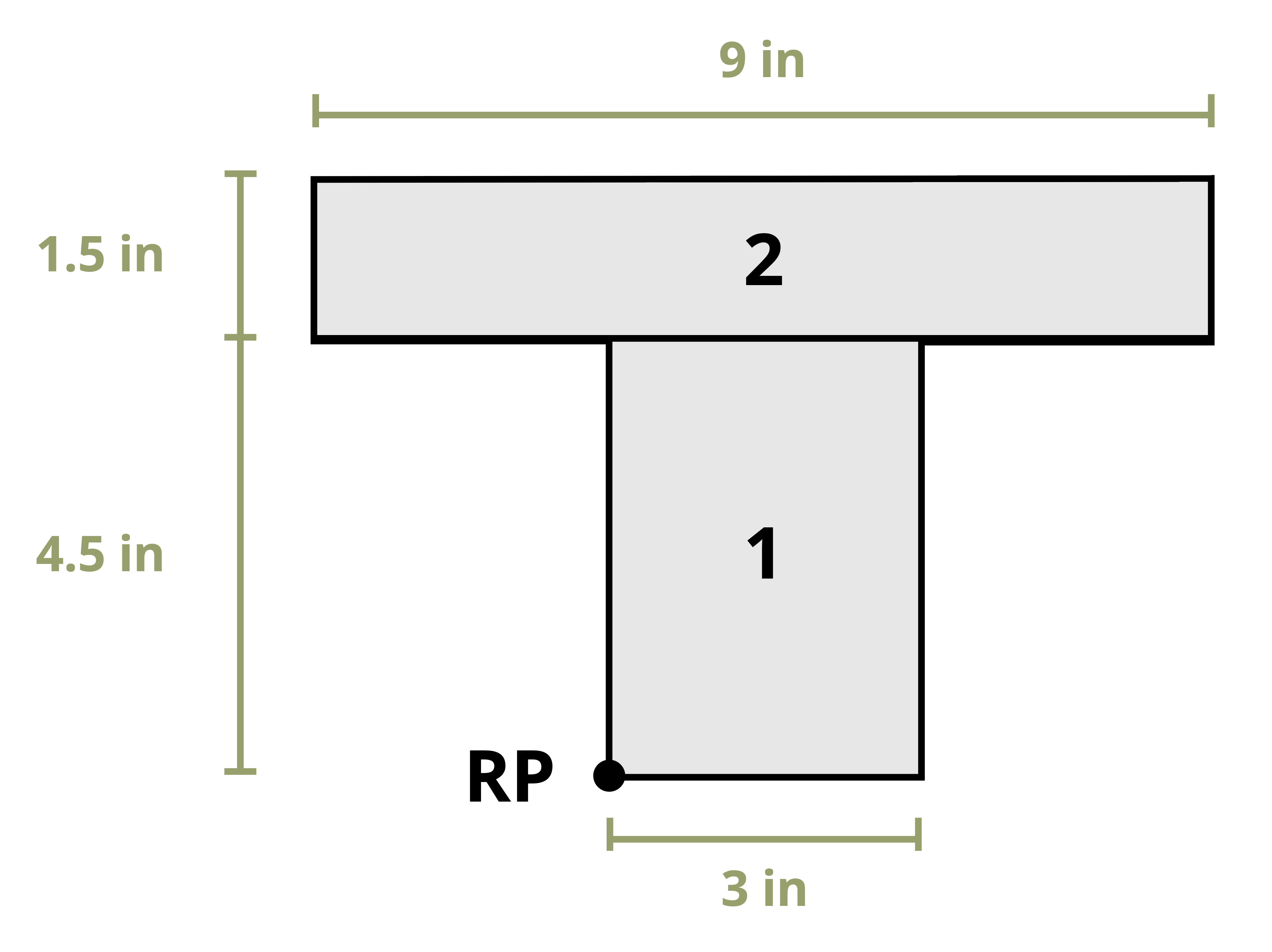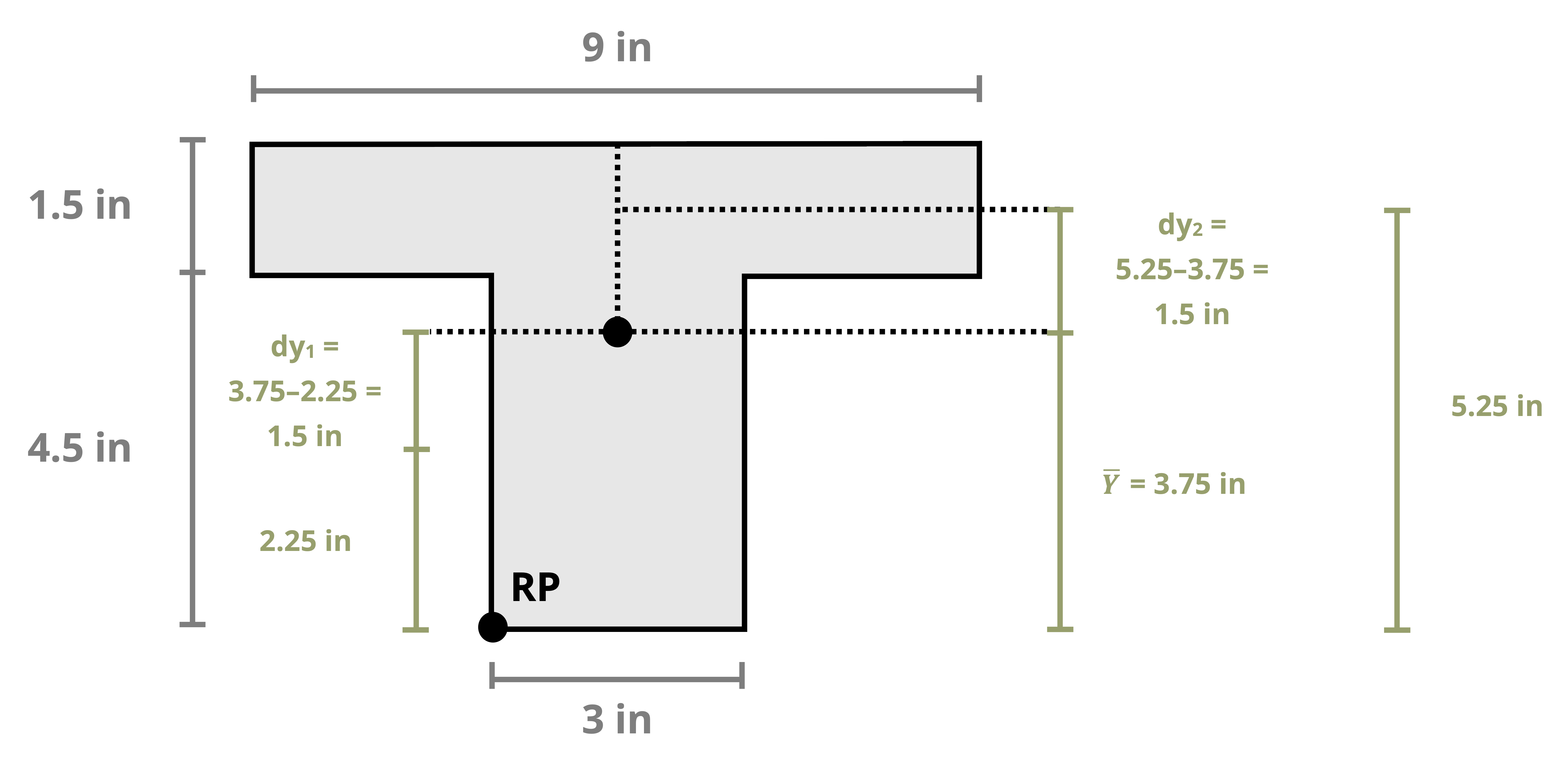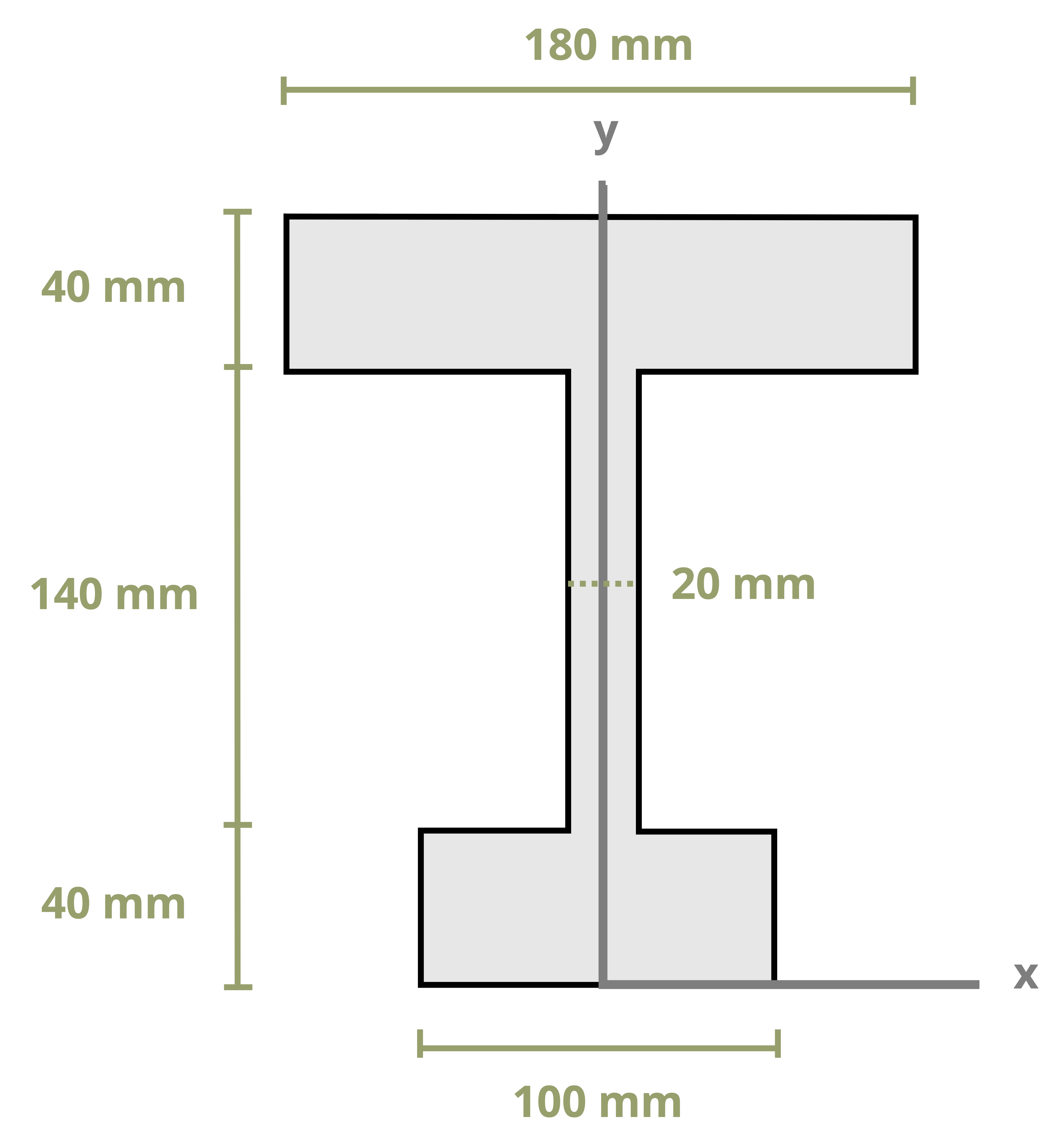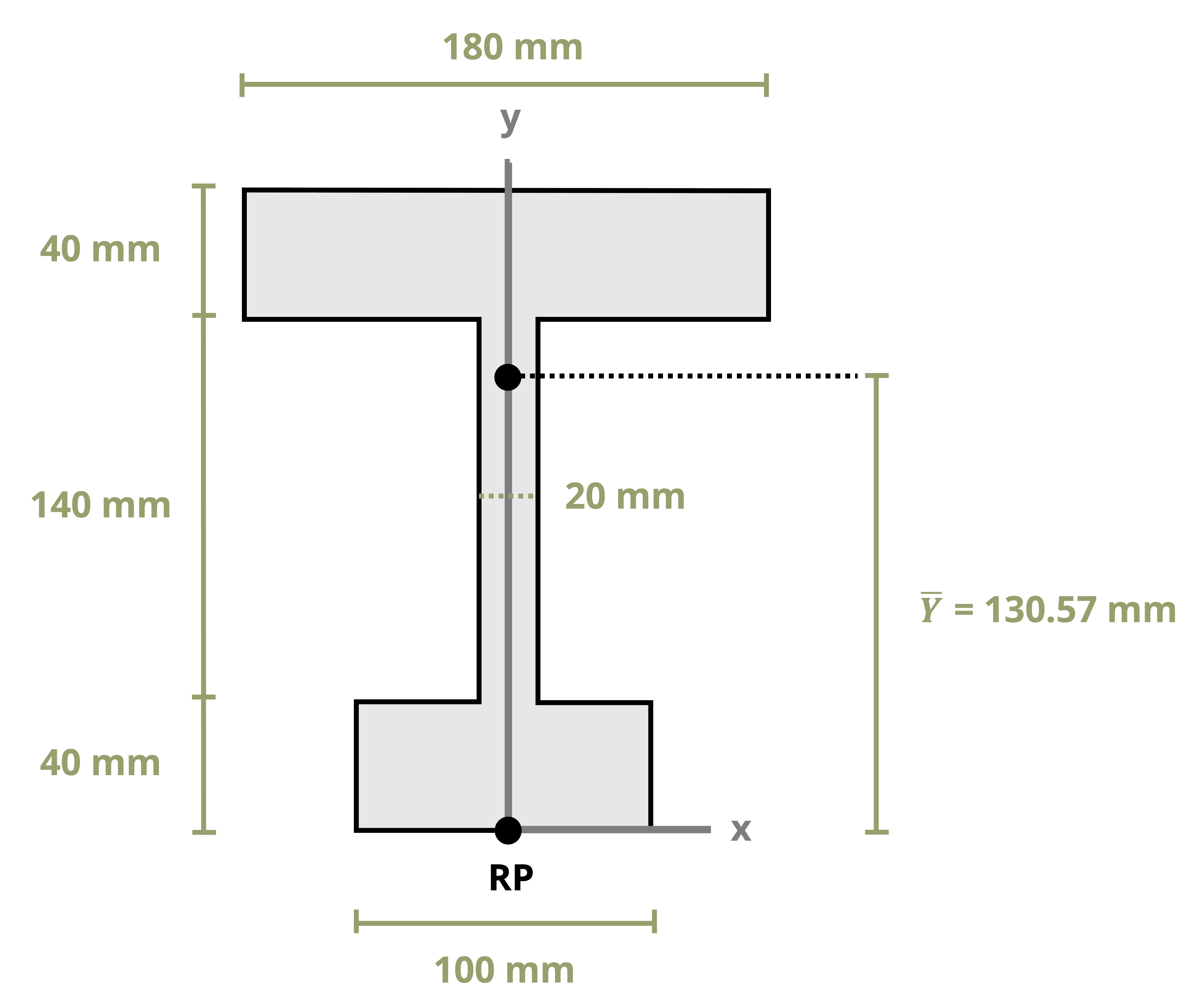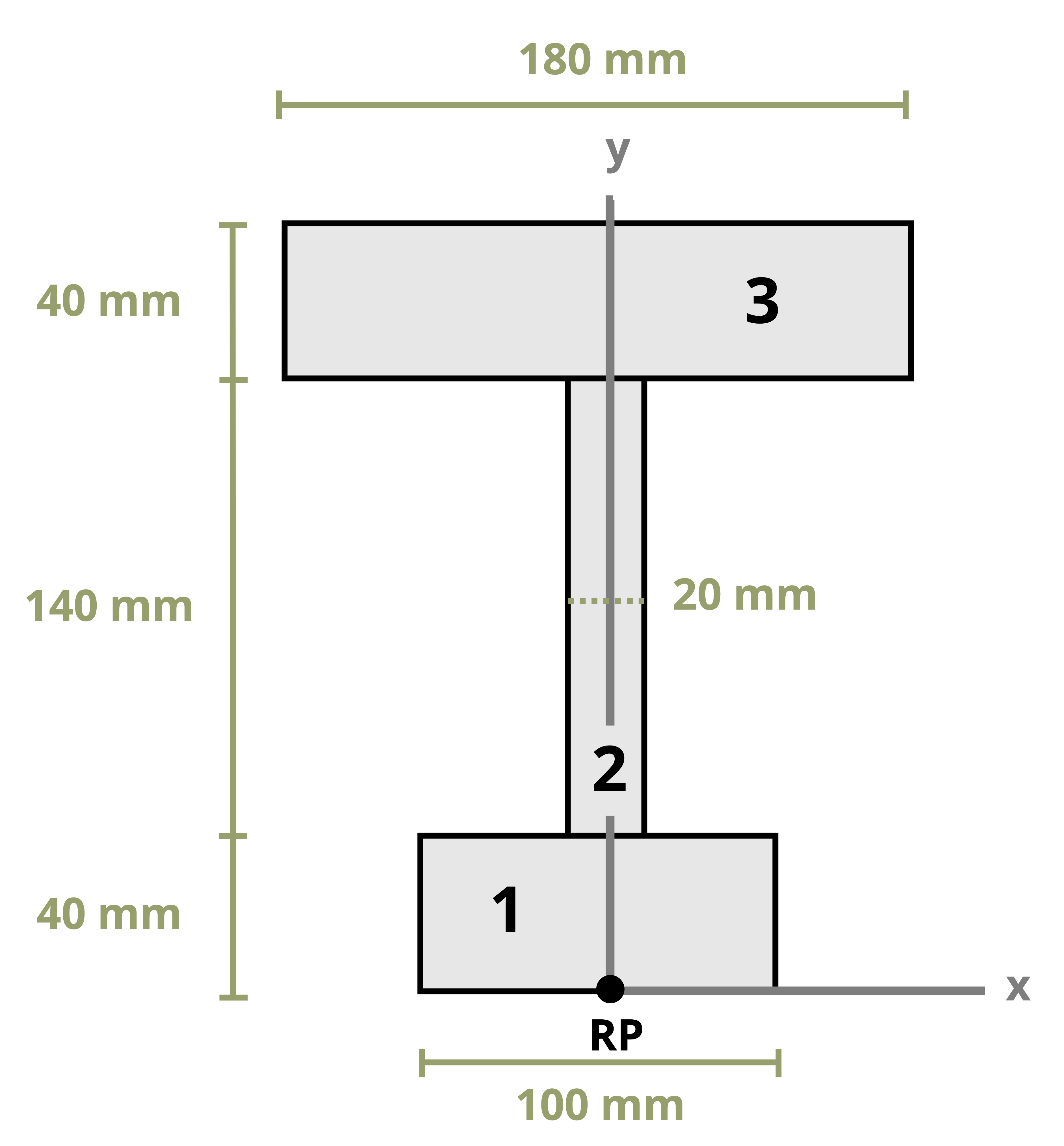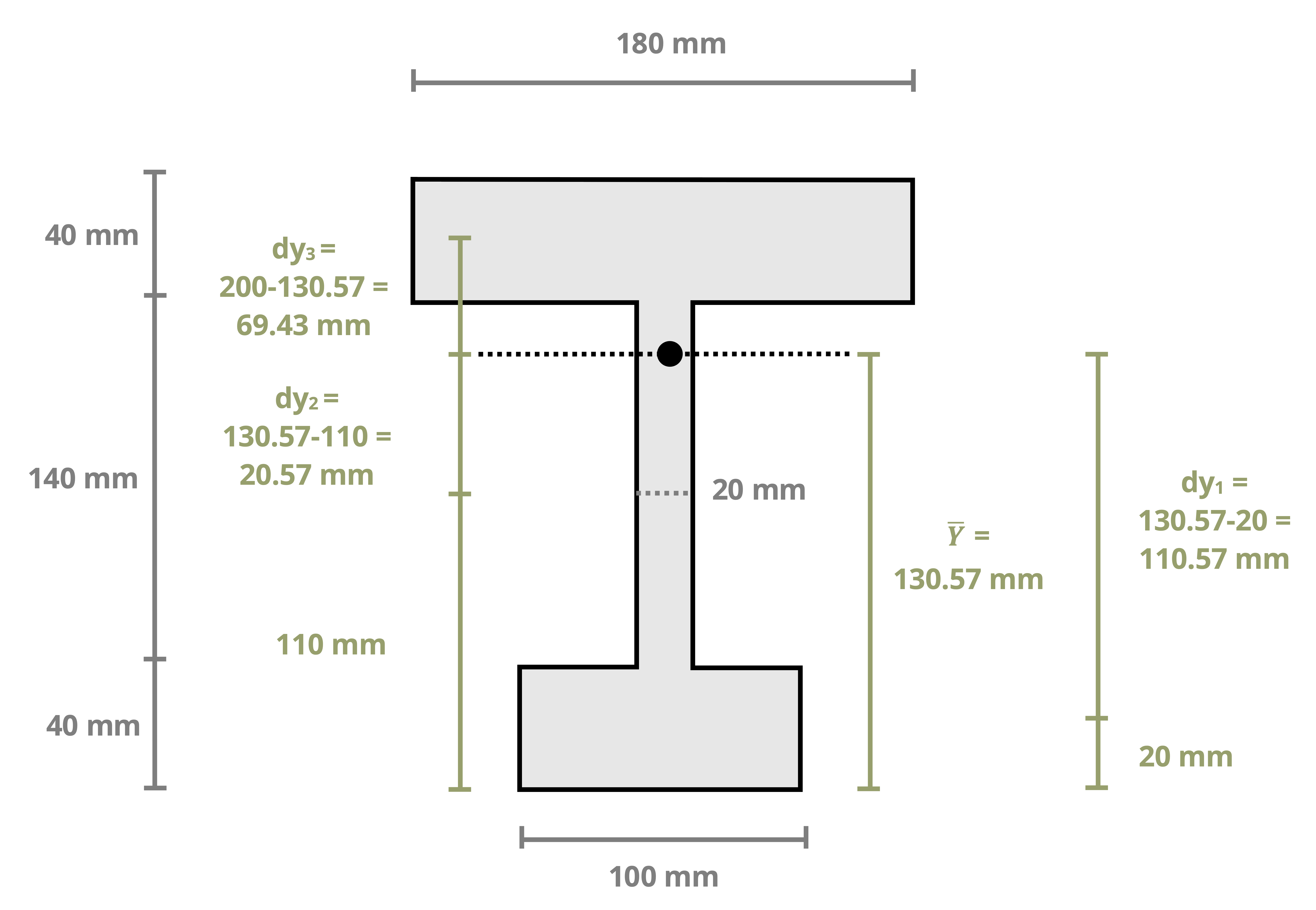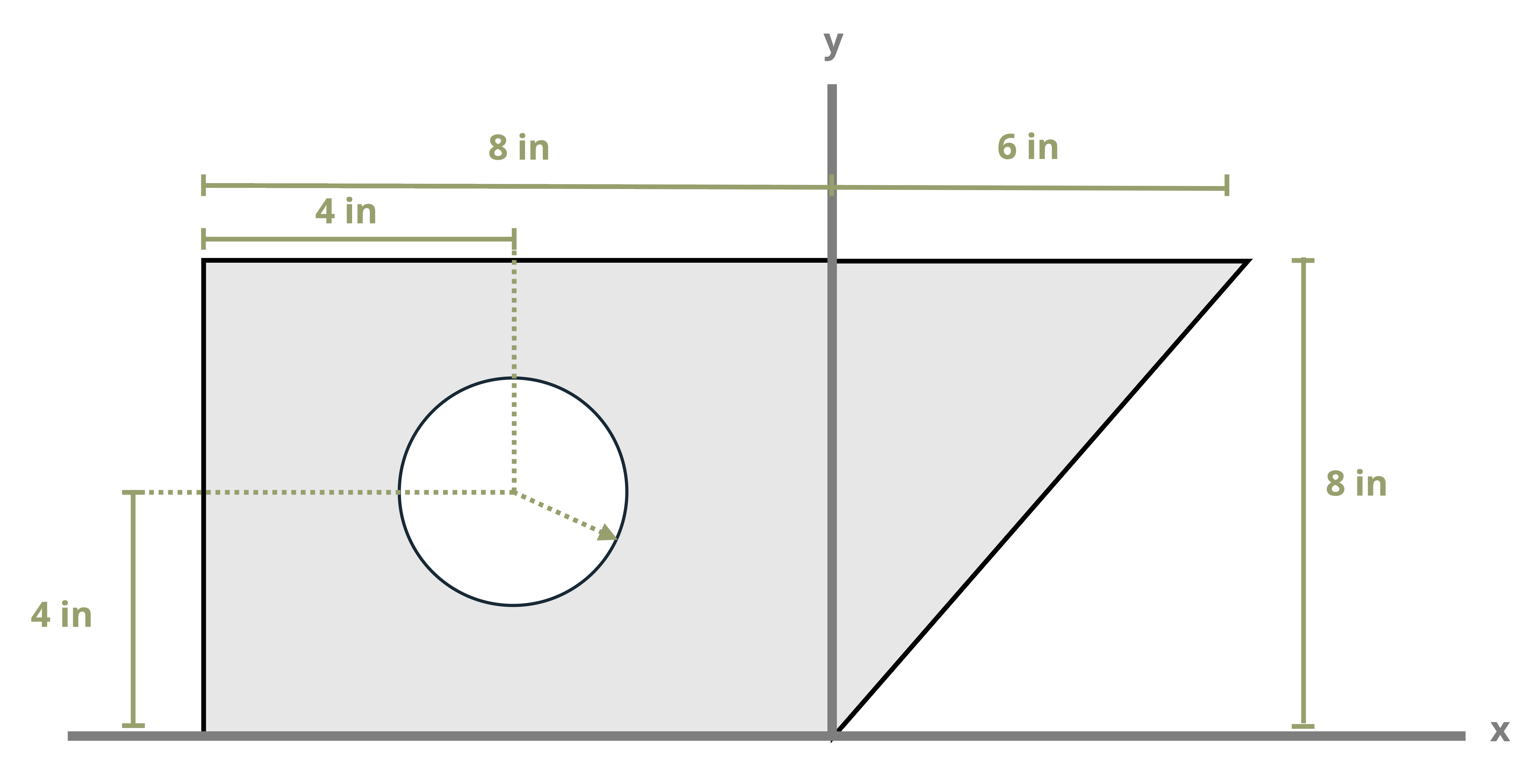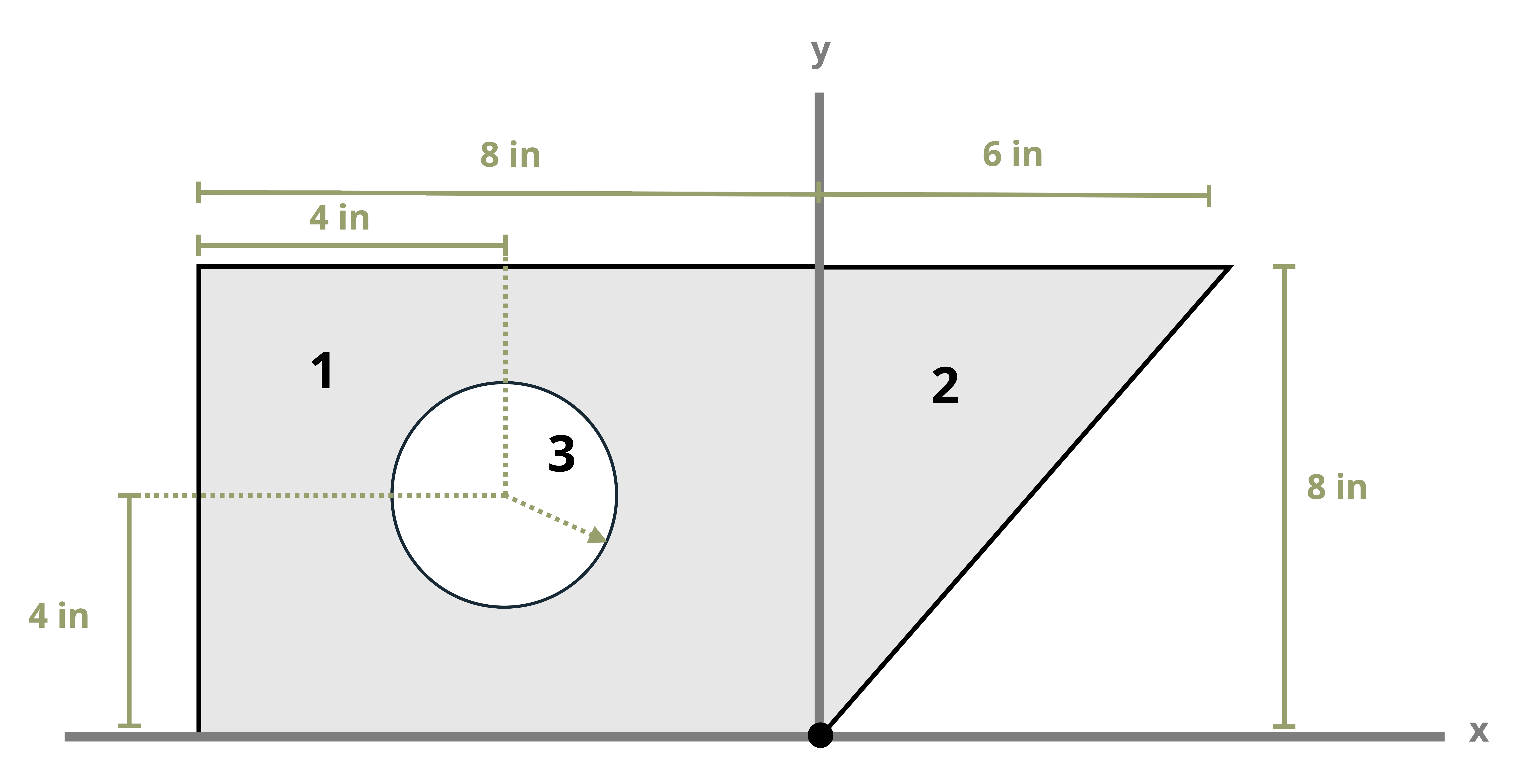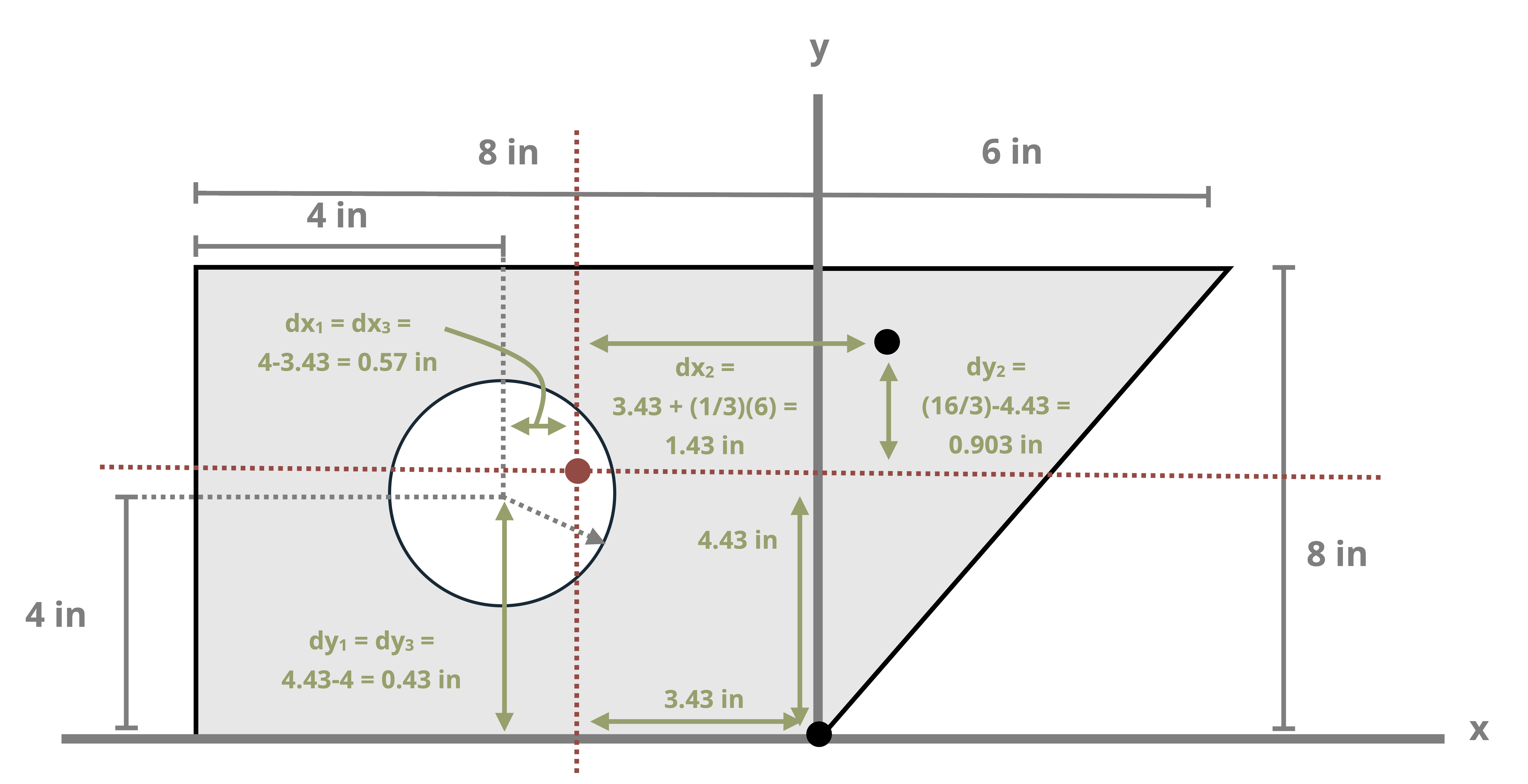8 Geometric Properties
Introduction
Click to expand
As we found in previous chapters, geometric cross-section properties are critical to calculating stresses and deformations for members subjected to axial and torsional loads. The same is true for finding stresses and deflections in beams subjected to shear and bending loads. This chapter describes methods for finding section properties necessary to calculate the stress and deflection in beams. Specifically, the centroid and the second moment of area.
You likely were presented with these topics in Statics, so this chapter is designed to be a review. Section 8.1 will review centroids and Section 8.2 will review area moments of inertia (also known as the 2nd moment of area).
.jpeg)
8.1 Centroid
Click to expand
An object possesses weight due to the gravitational force acting on its constituent particles. The collective effect of these forces yields the total weight of the object, which is concentrated at a single point known as the center of gravity. If the object is comprised of a homogenous (constant density) material, then the center of gravity is the same as the geometric center or centroid. In this section, we will focus our discussions on the centroid of an area for common structural shapes. For a more comprehensive discussion on the center of gravity, the center of mass, calculating centroids using integration, and distributed loads, see the Engineering Statics book by Baker and Haynes.
The location of the centroid of an area is the point where the first moment of area equals zero. The first moment of area about a point is calculated by multiplying the area by the perpendicular distance to the point. The centroid of an area can be found by splitting the area into a number (i) of discrete parts, summing the moment of area for these discrete parts, and then dividing by the sum of the area. We can use these weighted averages to find the location \((\bar{X}, \bar{Y})\) of the centroid of the area:
\[ \boxed{\begin{aligned} &\bar{X}=\frac{\sum \bar{x}_i A_i}{\sum A_i} \\ \\ &\bar{Y}=\frac{\sum \bar{y}_i A_i}{\sum A_i} \end{aligned}} \tag{8.1}\]
\(\bar{X}, \bar{Y}\) = Centroid coordinates of the overall area [m, in.]
\(\bar{x}_i, \bar{y}_i\) = Centroid coordinates of each discrete area [m, in.]
\(A_i\) = Area of each discrete area [m2, in.2]
We can find centroids of simple shapes easily by utilizing symmetry. When a shape possesses an axis of symmetry, each point on one side of the axis corresponds to another point symmetrically located on the opposite side. The distances between these mirrored points and the line of symmetry will sum to zero because they will be equal in magnitude but opposite in sign. This is true for every point in the shape, so the numerator of Equation 8.1 (the first moment of area) will be zero. Therefore, if a shape features a line of symmetry, its centroid must coincide with this line. In cases where a shape exhibits multiple lines of symmetry, the centroid is located at their intersection, as shown in Figure 8.2.

In this text, we will use common shapes or a composite of common shapes for our cross-sections. Appendix E includes the location of the centroid of some common shapes. Part of Appendix E is reproduced in Figure 8.3. Each row of the table includes a common shape with the centroid marked, and simple formulas for determining the x- and y-coordinates of the centroid and calculating the area of the shape.

Often, structural sections are combinations of these standard shapes called composite sections. As long as we know the location of the centroid of each shape that comprises the section, we will not need to use integration to find the location of the overall sections’ centroid. We can use Equation 8.1 in conjunction with the table in Appendix E to find the location of the centroid for composite shapes.
Example 8.1, Example 8.2, and Example 8.3 demonstrate the process for determing the centroid coordinates of composite areas.
8.2 2nd Moment of Areas
Click to expand
Another important geometric property needed to calculate stresses in beams is the Moment of Inertia of the Area (2nd moment of area). Similar to our discussion of centroids, you likely were presented this topic in Statics so this chapter is designed to be a review. By definition, the second moment of area or moment of inertia depicted in Figure 8.4 is defined as:
\[ \boxed{\begin{aligned} &I_x=\int_A y^2 d A \\ &I_y=\int_A x^2 d A \\ &I_z=J=\int_A r^2 d A \\ \end{aligned}} \tag{8.2}\]
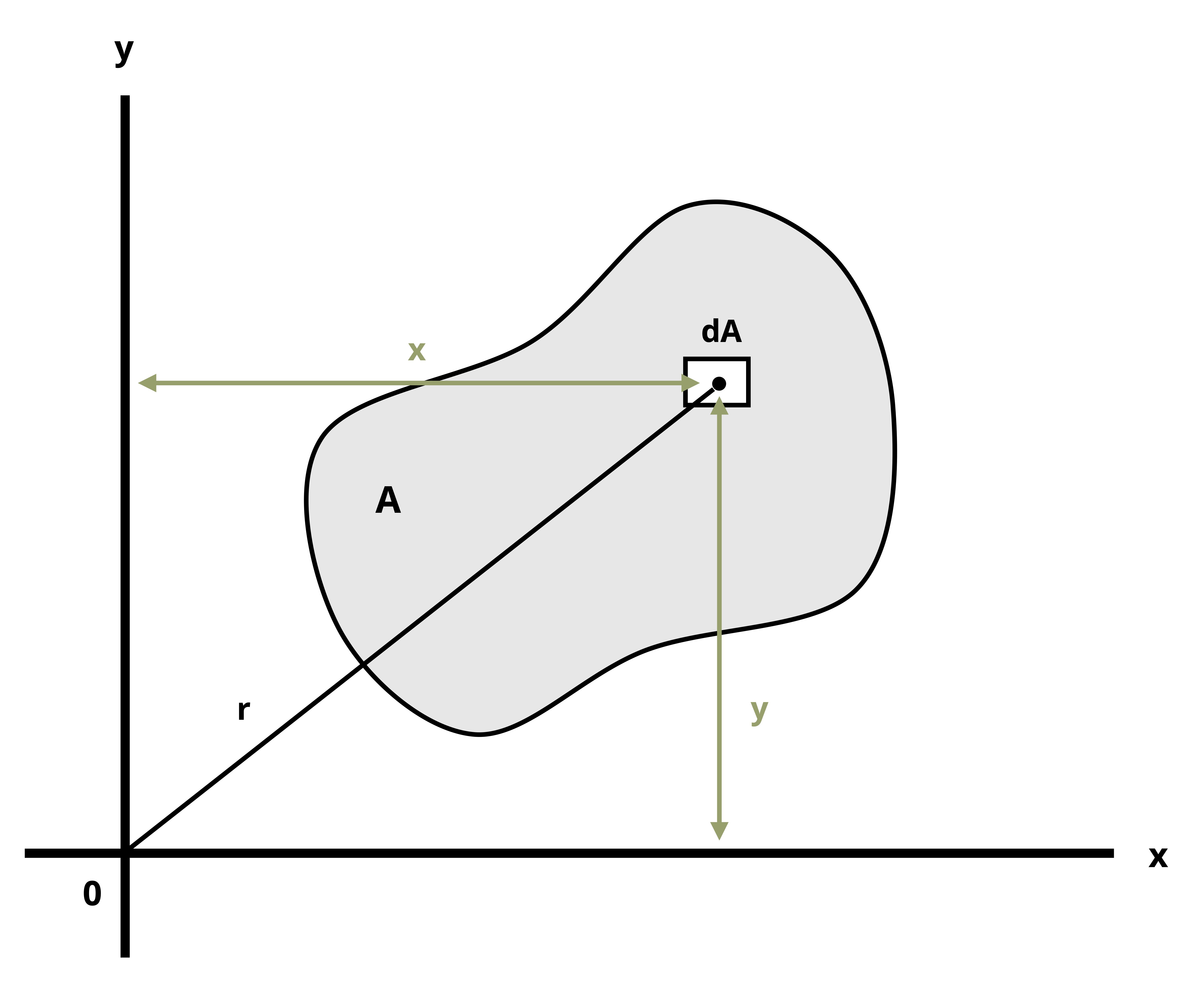
In this text, we will use common shapes or a composite of common shapes for our cross-sections. Appendix E includes formulas to calculate the moment of inertia. Part of Appendix E is reproduced in Figure 8.5. Each row of the table includes a common shape with the centroid marked, and formulas for determining the moment of inertia of the area about the x-, y-, and z-centroidal axes. Note that these equations are valid only for the axes passing through the centroid of the area and are written as \(\overline{I_{x^{\prime}}}\), \(\overline{I_{y^{\prime}}}\), and J respectively. The bar notation is used to signify that the moment of inertia is being calculated around the centroidal axes.
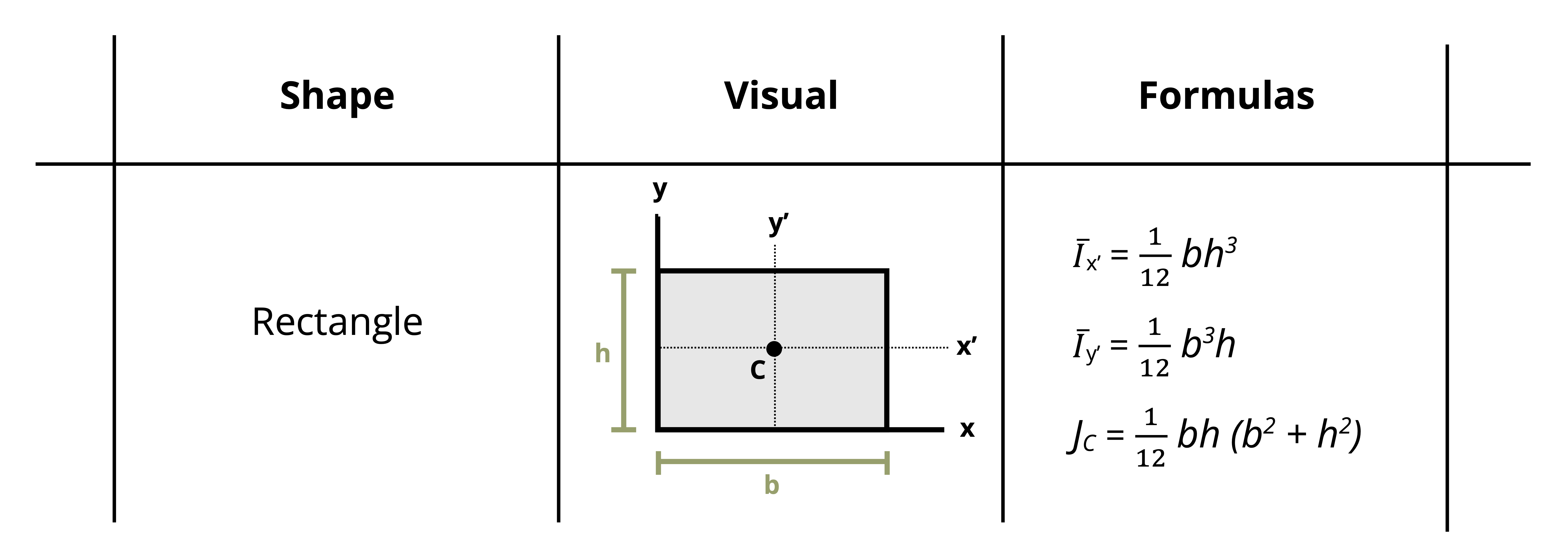
As noted previously, structural sections are often combinations of these standard shapes called composite sections. Similar to calculating centroids we will break these composite sections into common shapes and find the moment of inertia of these individual shapes. When we calculate each individual shape’s moment of inertia, we need to ensure that they are all about the same axis. The parallel axis theorem provides a method for calculating the moment of inertia of an area about an axis parallel to an axis passing through the centroid, given that the moment of inertia about the latter axis is known.
To establish the parallel axis theorem, we will examine the moment of inertia I of an area A relative to an axis x, as illustrated in Figure 8.6.
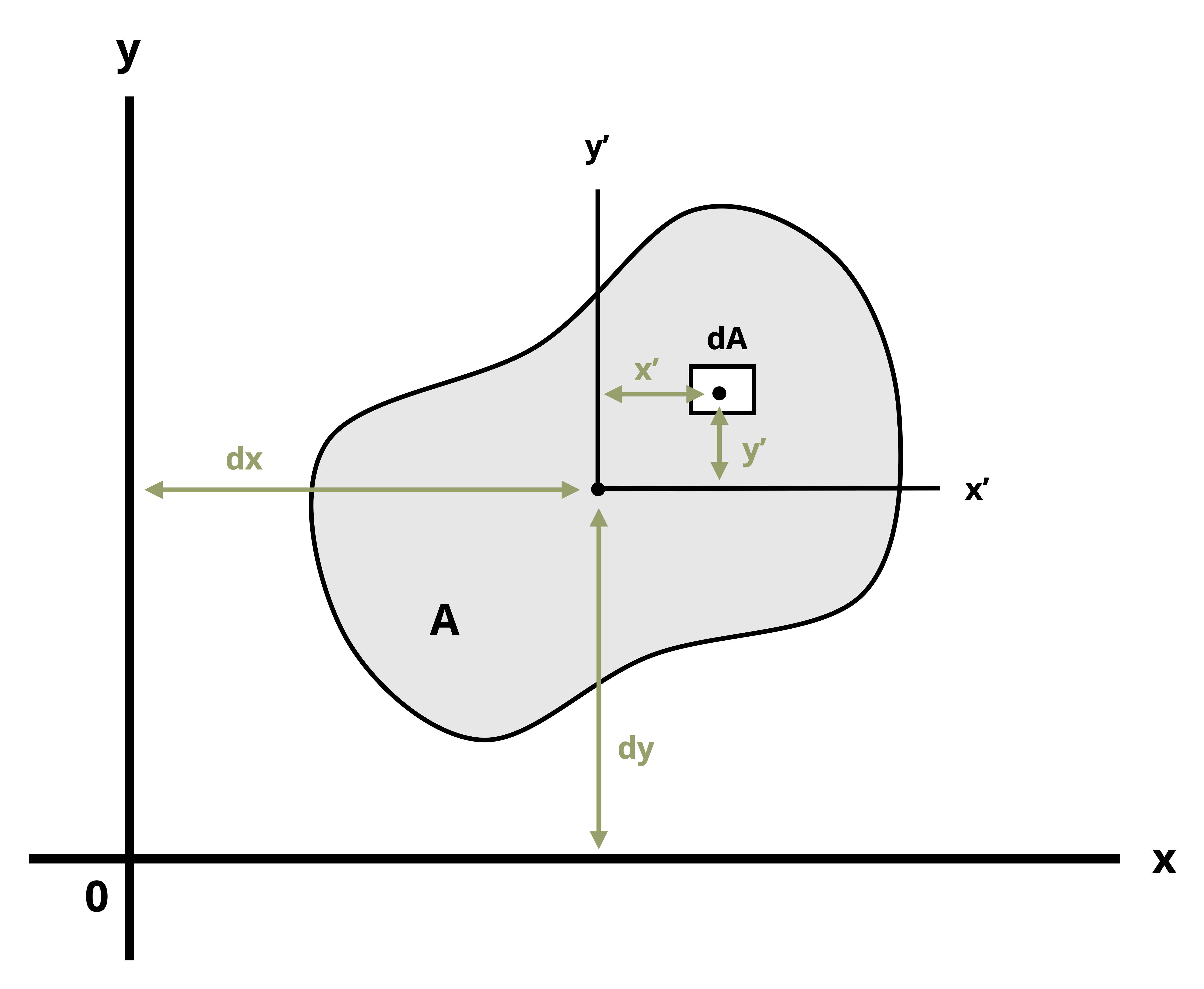
The centroid of the area is at C, where the x’-y’ axis is drawn; note that x’ is parallel to x and y’ is parallel to y. The x-y’ axes will be termed the centroidal axes and a distance of dx and dy from the x-y axes, respectively. The distance between the element dA and the x’-axis is denoted as y’. Now we have \(y=y^{\prime}+d_y\). Substituting into Equation 8.2, we have:
\[ \begin{aligned} & I_x=\int\left(y^{\prime}+d_y\right)^2 d A \\ & I_x=\int\left(y^{\prime}\right)^2 d A+2 d_y \int y^{\prime} d A+d_y^2 \int d A \end{aligned} \]
The first integral represents the moment of inertia about the centroidal axis x’. The second integral is zero since the centroid is located on the x’ axis (i.e., \(\int y^{\prime} d A\) represents the first moment of area about the x’ centroidal axis, which is zero as discussed in Section 8.1). The last integral represents the total area, A. So we have:
\[ \boxed{I_x=\overline{I_{x^{\prime}}}+A d_y^2} \tag{8.3}\]
A similar process is used to find an expression for Iy:
\[ \boxed{I_y=\overline{I_{y^{\prime}}}+A d_x^2} \tag{8.4}\]
Ix, Iy = the moment of inertia of an area with respect to a given axis [m4, in.4]
\(\overline{I_{x^{\prime}}}\) , \(\overline{I_{y^{\prime}}}\) = moment of inertia of that area with respect to a parallel axis passing through the centroid of the area [m4, in.4]
A = area [m2, in.2]
dx, dy = perpendicular distance between the given axis and the parallel centroidal axis [m, in.]
While the parallel axis theorem can be used to calculate the area moment of inertia around any pair of axes, we will primarily focus on calculating the area moment of inertia around the centroidal axes of a composite area. It is this term which will be used in Chapter 9 and Chapter 10 when calculating bending stresses and shear stresses. Example 8.4, Example 8.5, and Example 8.6 demonstrate the use of the parallel axis theorem to find the area moments of inertia for the composite areas from the earlier examples about their centroidal axes.
